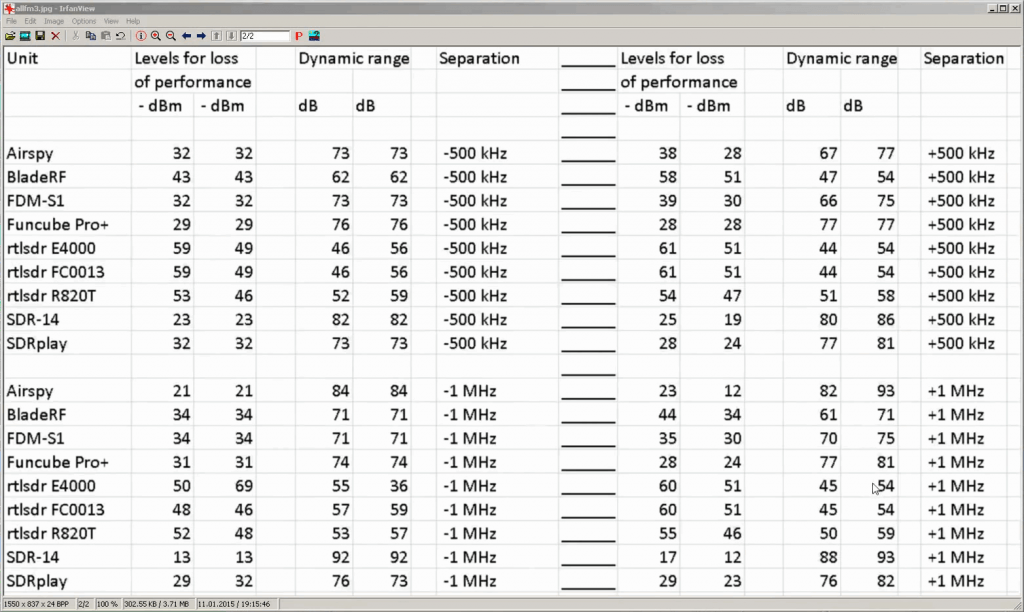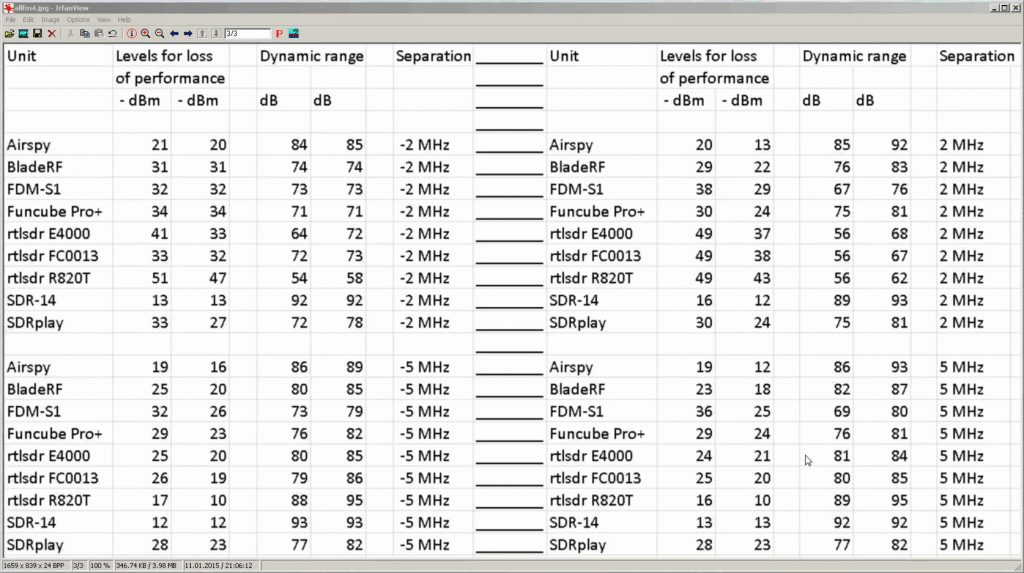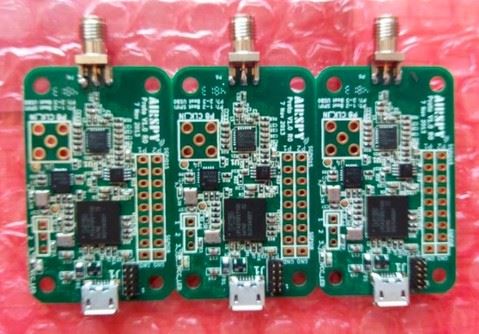Comparison of several SDRs on degradation from nearby strong signals at broadcast FM frequencies
The programmer of Linrad (aka Leif sm5bsz) has uploaded a video to YouTube that compares several software defined radios on dynamic range and compression performance in the presence of strong nearby signals. In the video Leif tests the Airspy, BladeRF with B200, FDM-S1, Funcube Pro+, rtlsdr/E4000, rtlsdr/FC0013, rtlsdr/R820T, SDR-14 and SDRplay.
The main test works by tuning to a broadcast band FM frequency and then injecting a strong carrier signal at distances of 500 kHz, 1 MHz, 2 MHz and 5 MHz from the center frequency. The carrier signal strength is slowly increased until the SDR shows signs of complete degradation of reception of the FM signal. Better SDRs will tolerate stronger nearby signals without degradation.
The results are summarized at 34:20, 1:21:38 and 1:48:30. We have also taken screencaps of the results at 1:21:38 and 1:48:30 and they are shown below. The first column is when a higher gain is used, and the second column is when a lower but still barely copyable gain level is used. In the Levels for loss of performance columns smaller numbers are better and in the Dynamic range columns larger numbers are better. Finally, at the end of the video starting at 1:45:55 Leif also tests the spur performance of the SDRs.



